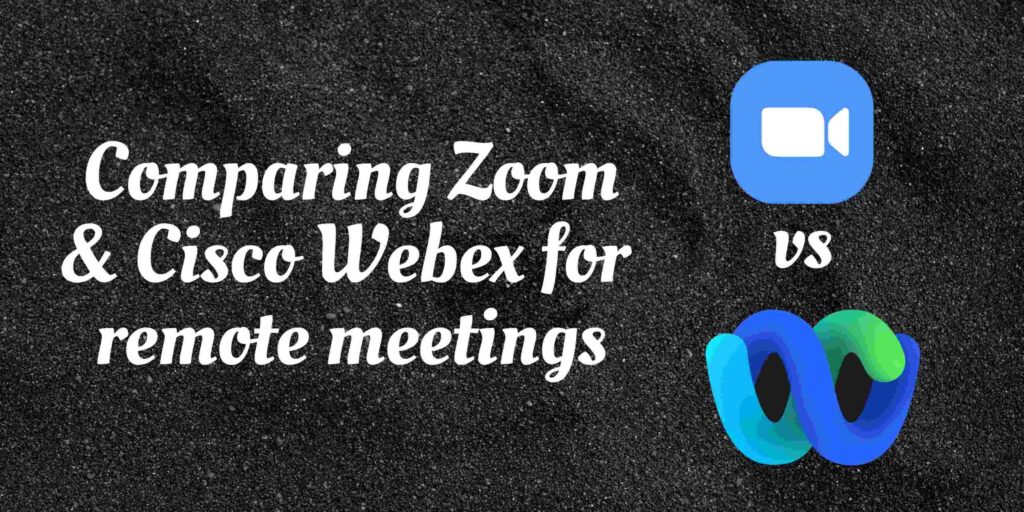
Unlocking the true potential of a sales team depends on more than just hard work—it demands a keen understanding of the details that contribute to the success or failure of a sales strategy.
So, in today’s data-driven environment, how do we understand and measure sales productivity to optimize our sales strategies and for maximum revenue? Let’s find out.
What Is Sales Productivity?
Sales productivity stands at the core of any successful business. It defines the efficiency and effectiveness of a sales team in generating revenue. Sales productivity goes beyond merely measuring the number of sales activities conducted within a specific period, it includes the quality and impact of those efforts on the overall revenue.
In simple terms, sales productivity evaluates how efficiently resources ( time, skills, tools) are utilized to attain sales goals. It involves analyzing metrics, such as sales volume, conversion rates, lead response times, and other KPIs, to gauge the performance and success of the sales pipeline.
Why Do You Need To Calculate Sales Productivity?
Calculating sales productivity periodically ensures sustainable growth. It serves as a compass, navigating through successful and failed strategies; it not only aids in assessing performance but also spotlights areas for improvement within the sales process. From setting realistic sales goals to refining strategies, calculating sales productivity plays a critical role.
Sales Productivity Formula Explained
The sales productivity formula is a fundamental equation comprising two critical elements: Output and Input. Output represents the achieved outcome, specifically the revenue generated by your dedicated sales team. It embodies the tangible success and financial gains resulting from their efforts. AndInput refers to the resources, effort, and time invested by the sales team to facilitate these sales and generate revenue.
Now, let’s roll up our sleeves and dive into the steps to calculate sales productivity.
How to Calculate Sales Productivity
Having a strategic framework to assess and refine your approach is paramount. By identifying leading indicators for growth, calculating conversion rates, and employing reverse engineering tactics, businesses can gain valuable insights into their sales performance and fortify their path to success. Here’s a better look at the three factors.
1. Identify Leading Indicators
These are predictive metrics that provide insights into future revenue potential and allow real-time adjustments for better outcomes. Depending on the nature of your business, these could include:
- Meetings Booked: These scheduled meetings represent potential opportunities and engagement with potential customers.
- Discovery Calls: Initial conversations or discovery calls play a crucial role in understanding customer needs and preferences. Tracking these calls helps in gauging the depth of initial engagements and future prospects.
- Proposals Sent: This signifies a progression in the sales process. Monitoring the number of proposals sent showcases active efforts to convert prospects into customers.
2. Calculating Conversion Rates
Analyze the conversion rate by assessing closed deals against the number of proposals sent.
For instance, if a representative achieves a 25% conversion rate, with a revenue goal of $1 million and an average deal size of $100,000, they would require 10 deals to meet their target.
3. Reverse Engineering Sales Forecast
Reverse engineering the sales forecast involves deconstructing sales targets to understand the activities required to achieve these goals. This approach helps in:
- Activity Requirement Estimation: By breaking down the sales targets, it becomes clearer how many activities (such as calls, meetings, proposals) are needed to meet revenue goals.
- Optimization Opportunities: Identifying areas within different stages of the sales process that can be optimized. This could include improving lead qualification, enhancing proposal quality, or streamlining closing techniques.
10 Important Sales Productivity Metrics And Their Formula
1. Lead Conversion Rate:
Formula: Lead conversion rate = (Number of leads / Total number of visitors) x 100%

The lead conversion rate assesses the percentage of leads that successfully convert into actual customers. It serves as a fundamental metric to evaluate the effectiveness of lead nurturing initiatives and the efficiency of overall sales strategies. A higher conversion rate typically signifies a more successful and impactful sales process.
Example: An e-commerce site receives 500 visitors from their social media. Of those 500 visitors, only 25 made a purchase. The lead conversion rate would be: (25 / 500) x 100% = 5%
2. Average Deal Size:
Formula: Total Value of Deals / Number of Deals

The average deal size metric calculates the mean value of each closed deal within a specific period. Understanding this metric is crucial as it provides insights into the typical monetary value of deals closed by the sales team. Analyzing fluctuations in average deal size can help identify trends and gauge the team’s performance in securing various deal sizes.
Example: Let’s consider a scenario where you’ve made the following 5 deals: $7,200, $8,500, $6,000, $9,300, and $7,800.
To find the average deal size (ADS) for these deals, you’d calculate it as follows: ADS = ($7,200 + $8,500 + $6,000 + $9,300 + $7,800) / 5
ADS = $38,800 / 5 ADS = $7,760. Therefore, the average deal size for these five deals is $7,760.
3. Win Rate:
Formula: (Number of Won Deals / Number of Opportunities) X 100

The win rate measures the percentage of successful deals closed in comparison to the total number of opportunities pursued by the sales team. It offers valuable insights into the team’s effectiveness in converting potential opportunities into successful deals. A higher win rate indicates a more efficient and successful sales strategy.
Example: Suppose in a quarter, you had 80 pitch opportunities, and out of those, 25 deals were successfully closed.
To calculate the win rate, we will do the following:
Win Rate = (25 / 80) x 100
Win Rate = 0.3125 x 100 Win Rate = 31.25%.
Therefore, your win rate for that specific quarter would be 31.25%.
4. Sales Cycle Length:
Formula: Average Time to Close a Deal

The sales cycle length represents the average duration taken to progress a lead through the sales pipeline, from the initial contact to the final closing of the deal.
Example: Let’s consider a scenario where you have closed six deals with varying lengths of time to complete:
Deal 1: 25 days
Deal 2: 40 days
Deal 3: 35 days
Deal 4: 50 days
Deal 5: 30 days
Deal 6: 45 days
To calculate the sales cycle length for these deals:
Total days taken for all deals = 25 + 40 + 35 + 50 + 30 + 45 = 225 days
Now, divide the total number of days (225) by the total number of deals (6) to find the average length in days:
Average length in days = 225 / 6 = 37.5 days
Therefore, based on these deals, the average length of the sales cycle is approximately 37.5 days. This metric suggests that similar deals in the future may take around 37.5 days to close, on average.
5. Time-to-Productivity for New Reps:
Formula: Time Taken for New Reps to Achieve Quota

To determine the time to productivity, calculate the duration for each new hire to reach full productivity by subtracting their start date from the date they achieve total productivity.
This metric evaluates the time required for new sales representatives to reach their full productivity potential and achieve their set sales targets or quotas.
Example: Let’s consider a customer support representative. They can be deemed fully productive when they reach a specific metric, such as achieving a target resolution time for customer inquiries or maintaining a certain customer satisfaction score.
Once the criteria for “full productivity” is established, the next step involves monitoring and tracking the time taken by each customer support representative to meet the set benchmarks.
6. Opportunities Lost Rate:
Formula: (Number of Lost Opportunities / Total Opportunities) X 100

The opportunities lost rate measures the percentage of missed or lost sales opportunities against the total opportunities available. It assists in identifying the reasons behind lost deals, potential weaknesses in the sales process, and areas requiring improvement, thereby helping in refining strategies for future opportunities.
Example: Suppose a sales team had 200 opportunities in a given period. Out of these opportunities:
- 120 opportunities were successfully closed (won).
- 30 opportunities were marked as “closed-lost” due to various reasons.
- 50 opportunities are still ongoing or in the pipeline.
In this scenario: Number of Lost Opportunities = 30
Total Number of Opportunities = 200
Opportunities Lost Rate (%)=(30/200)×100=15%
7. Customer Acquisition Cost (CAC):
Formula: Total Sales and Marketing Costs / Number of New CustomersAcquired

CAC calculates the average cost required to acquire a new customer. This metric helps assess the efficiency of sales and marketing strategies, providing insights into the costs associated with acquiring each customer.
Example: Let’s say the sales expenses for the last fiscal quarter amounted to $400,000. The marketing expenses for the same period totaled $200,000. During that quarter, the company acquired 1,000 new customers.
In this scenario: Total Sales and Marketing Expenses=$400,000+$200,000=$600,000.
Number of New Customers Acquired=1,000
So, CAC=$600,000/ 1,000 = $600
Therefore, the Customer Acquisition Cost (CAC) for this quarter is $600 per new customer acquired.
8. Customer Lifetime Value (CLV):
Formula: Customer Lifetime Value (CLV) = Customer Value × Average Customer Lifespan

CLV represents the total value a customer brings to a business throughout their relationship. It assists in understanding the long-term revenue potential of a customer and aids in strategic decisions regarding customer retention and acquisition.
Example: Suppose you run an e-commerce business selling subscription-based products. On average:
- The average purchase value per customer is $50.
- The average customer lifespan (the duration a customer stays subscribed) is 2 years.
To calculate the Customer Lifetime Value In this scenario:
Average Customer Lifespan = 2 years
CLV = $50×2 years = $100
9. Sales Pipeline Velocity:
Formula: Number of Deals in Pipeline / Average Sales Cycle Length X 100

Pipeline velocity measures the speed at which leads move through the sales pipeline. This metric helps in forecasting and identifying potential bottlenecks, allowing for better pipeline management and increased efficiency.
Example: Suppose a company has 50 deals currently in the sales pipeline, and the average sales cycle length to close a deal is 30 days.
Using the formula: Sales Pipeline Velocity = 50/30 × 100
10. Lead Response Time:
Formula: Time Taken to Respond to a Lead’s Inquiry

This metric evaluates the time taken by the sales team to respond to a lead’s inquiry or initial contact. It directly influences lead engagement and conversion rates, emphasizing the importance of prompt responses in securing deals.
Example: Let’s consider a scenario where a sales team received 50 leads and the total time taken to respond to these leads was 400 minutes.
Using the formula:
Lead Response Time=400/ 50=8 minutes per lead
Therefore, the lead response time for this scenario is 8 minutes per lead on average.
Conclusion
In the pursuit of generating consistent revenue, understanding these metrics isn’t just about crunching numbers; it’s about deciphering patterns, anticipating trends, and curating strategies that resonate with the pulse of the market. Sales productivity demands adaptability, and a shrewd understanding of your sales pipeline. You can only track the data you have, and at Goodmeetings, we’re here to empower you with probably the most crucial data – customer meeting insights.
The Goodmeetings platform allows you to capture all the actions done during a meeting. It comes in handy when you want to know the average time a rep spends selling during the call.
To know more, book a no strings attached demo!
Having a productive sales team is essential, and it starts with identifying, prioritizing, and deprioritizing.
Increase your team’s sales productivity and,





